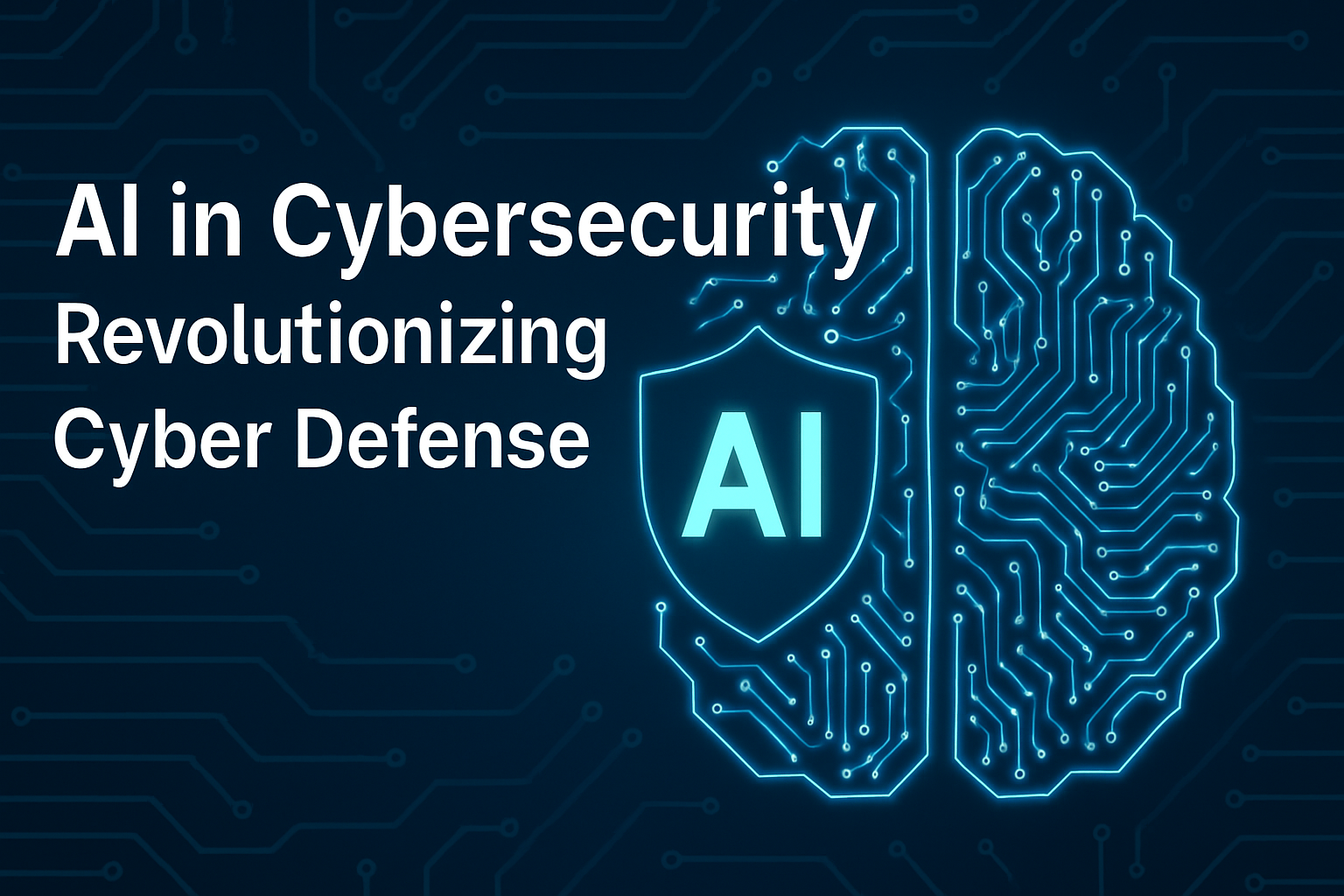
How Artificial Intelligence is Revolutionizing Cybersecurity
Today’s world of cyberspace is steadily making new threats more detailed and developing enhanced methods of attack. Cybercriminals act very smartly; thus, standard measures are slowly becoming useless. Based on artificial intelligence (AI) in cybersecurity, cyber security is smarter, faster, and more effective in this new age. Adopting AI solutions enables organizations to identify, minimize, and address threats with increased effectiveness.
How AI Enhances Cybersecurity
Threat Detection and Prevention
AI is also very efficient in responding to threats that may be real at any given time. Artificial intelligence technologies keep track of traffic and activity within the network to identify any suspicious activity that may equate to an attempt at hacking. For instance, AI can recognize login points and, often, large volumes of data movement to take appropriate action immediately.
Automated Incident Response
When a cyberattack happens, speed and quick decision making are of essence. AI systems can act quicker than human teams using pre-programmed responses to halt losses. Because they allow operations to continue and minimize the time out of business, such systems make a difference.
Predictive Analysis
AI as a technique enables this analysis based on patterns to prevent future threats, unlike traditional security measures that merely react to threats. This capacity to predict how and when a system could be exploited empowers systems to prevent and deal with risks before they can be manipulated, making protection much better.
Fraud Detection
AI now holds a critical role of detecting fraud. Here, AI keeps track of user activity and transactions; whenever it identifies something uncharacteristic of the user, it is most likely a fraud. This real-time detection reduces enormous resource loss and protects valuable information.
Applications of AI in Cybersecurity
Endpoint Security
Both malware identification and anti-virus software utilize artificial intelligence to defend tools from complex hazards. These tools learn the new attacks to provide the endpoint protection in a stable state.
Email Security
Phishing remains active, and the threat of this type of attack today remains high, but this is where artificial intelligence comes in. By recognizing and filtering out malicious content sent through email, AI protects users from phishing scams.
Network Monitoring
The speciality that AI provides is that it identifies threats and analyses the flow of network traffic simultaneously to avoid a data breach. These systems identify and prevent activities likely to become dangerous deeds.
Identity Verification
AI makes authentication more rigorous and efficient by the use of biometric such as face detection and fingerprint detection. This makes it secure to control access; hence, any unauthorized access is well eradicated.
Challenges of AI in Cybersecurity
Adversarial AI
AI makes for a strong defence and powerful tools in attackers’ hands to create challenging threats. Adversarial AI brings more complex attacks to cybersecurity systems, which challenge the systems.
Data Privacy
AI has adopted many data sets to boost the chances of its learning, which has been a primary concern for user privacy. Privacy and security are two main concerns in organizations that are considered complex due to conflicts of interest.
False Positives
AI systems often raise security threats where there are none, and this causes a lot of disturbances. Optimization of algorithms cannot be overemphasized as they form the basis for eliminating false positives.
Future Trends in AI-Powered Cybersecurity
AI and Blockchain Integration
AI integrated with blockchain provides significant advantages such as improved system insulinity and, thus, data accuracy.
Federated Learning
It aids in integration, involving various organizations to develop common-aim AI models without having to share crucial information about every firm.
Advanced Behavioral Analytics
Deep learning models from artificial intelligence can follow users’ behavior and better identify threats.
The Bottom Line
AI is changing cyber security through threat identification, combating, and protection methods. It helps organizations build plans in anticipation of future threats so as to remain relevant in the growing cyber world. The synergy between the developers of IT technology and cybersecurity will ensure continuous enhancement of the application of AI, which, therefore, becomes an invaluable component in measures against cyber threats.



